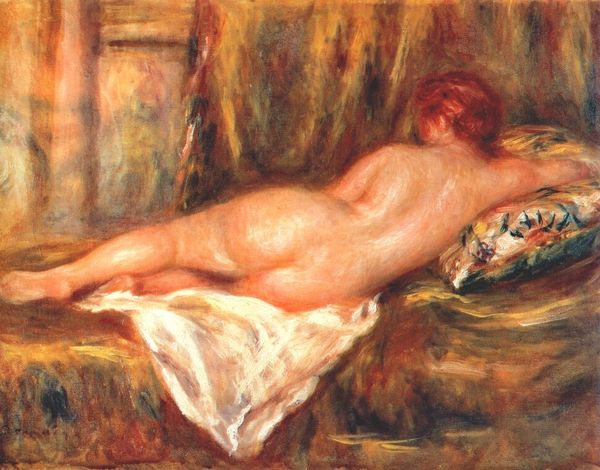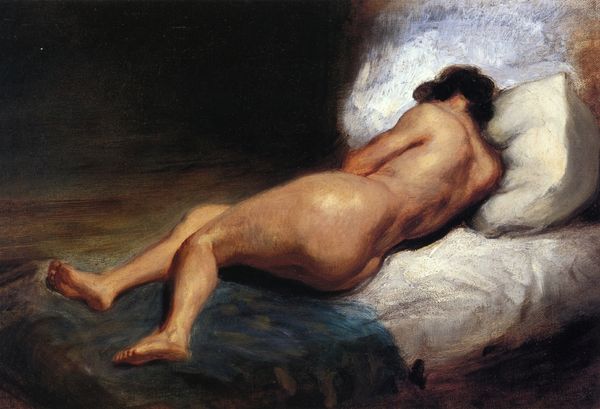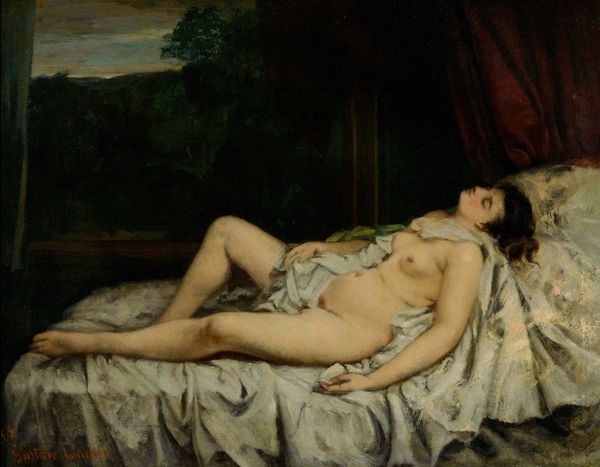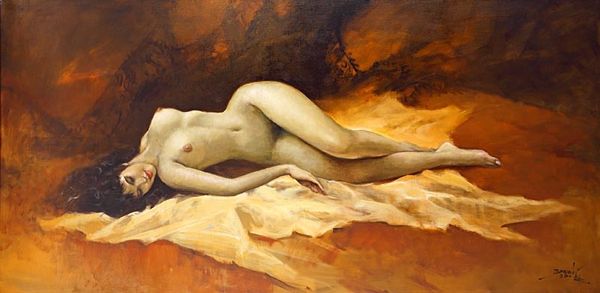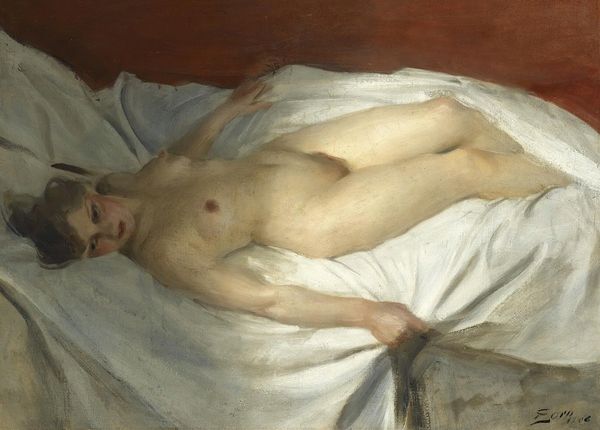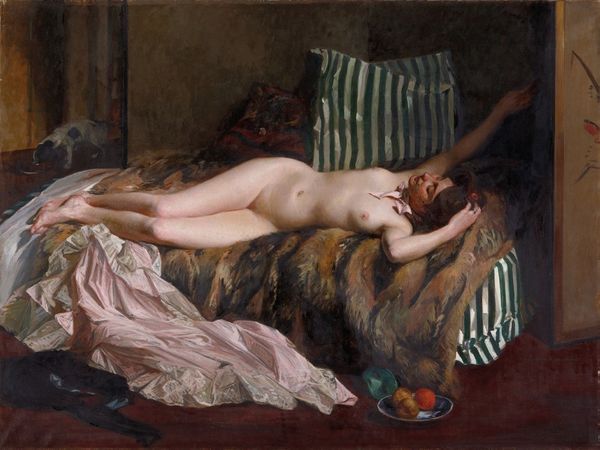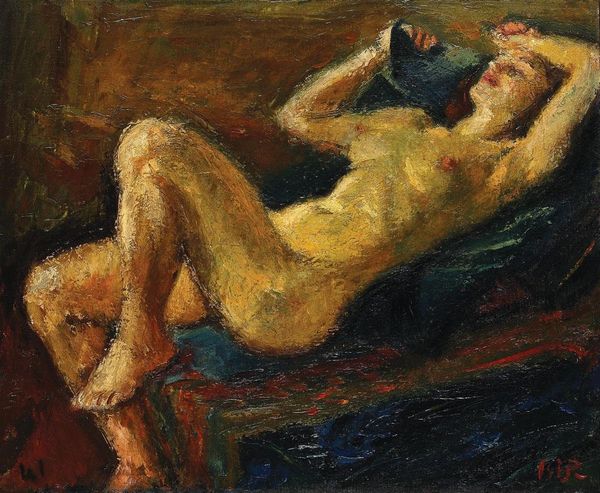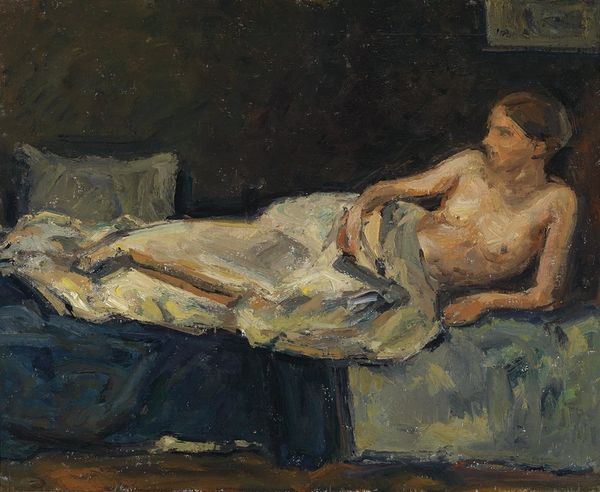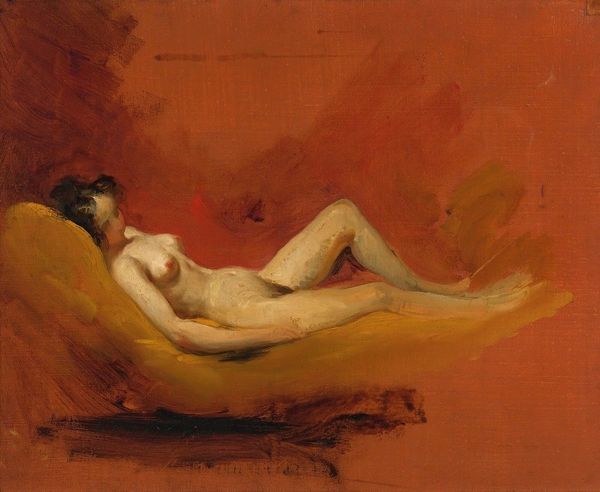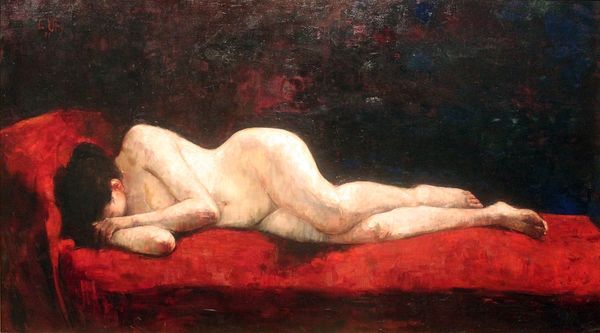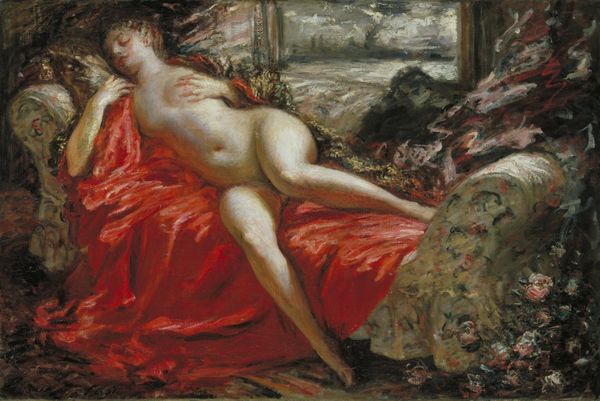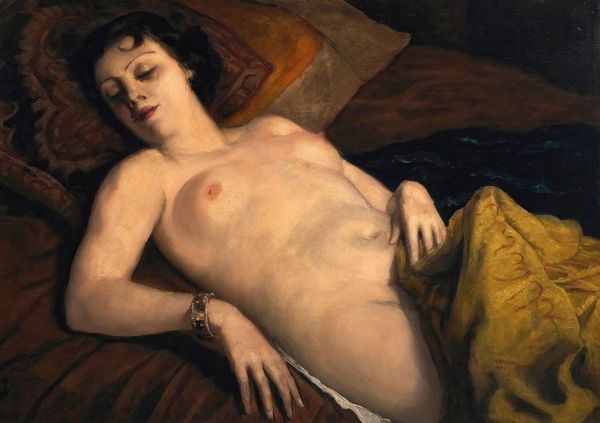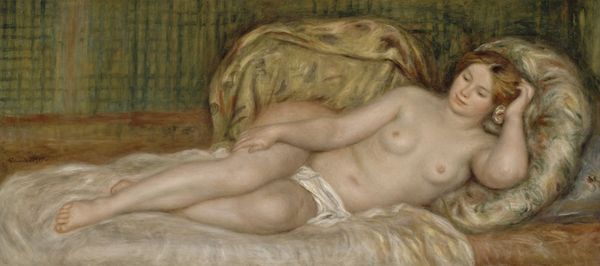
Copyright: Public domain
Editor: So here we have Ipolit Strambu's "Reverie," an oil painting from 1920. The woman's languid pose and the warm, muted tones create this intimate, dreamlike feeling. How do you interpret this work, especially given its historical context? Curator: The socio-political elements certainly offer an interesting angle. In the early 20th century, nudes became a vehicle to reflect changing views of women and social norms. "Reverie" captures a moment of quiet contemplation. What kind of statements do you think society might have been trying to convey here? Editor: It could be arguing for female agency, portraying women not just as objects, but as subjects capable of independent thought. Or is it furthering the male gaze through art? Curator: Precisely. The setting and the presentation are just as crucial. This scene feels contained, almost like a private theatre. Who are the intended viewers? Is it to titillate a patron or portray inner worlds in defiance of society's roles for women at the time? These historical considerations profoundly influence our experience and interpretation of art. Does Strambu celebrate his model or reduce her to her naked form? What do *you* see as her reality, captured in a painting? Editor: I hadn't considered how the ‘gaze’ of the viewer is such an integral part of the work's meaning and how social changes at the time inform how women were portrayed. Curator: It all comes down to perspective, doesn't it? When studying any work of art it is paramount that we investigate the forces which surround its creation to discover its place in culture and history. Editor: Absolutely! Considering these dynamics enriches the viewing experience so much.
